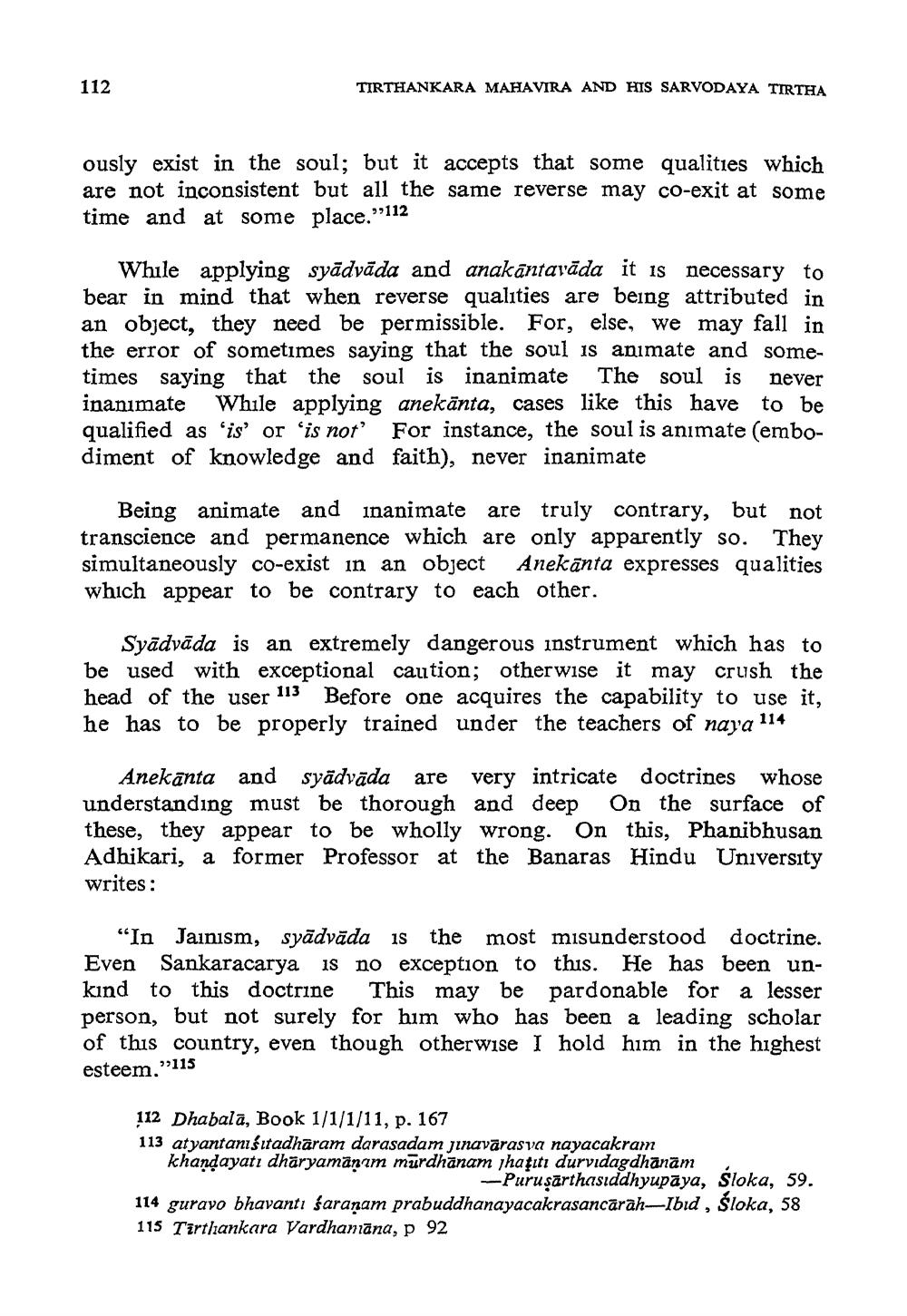________________
112
TIRTHANKARA MAHAVIRA AND HIS SARVODAYA TIRTHA
ously exist in the soul; but it accepts that some qualities which are not inconsistent but all the same reverse may co-exit at some time and at some place."112
While applying syadvada and anakantavada it is necessary to bear in mind that when reverse qualities are being attributed in an object, they need be permissible. For, else, we may fall in the error of sometimes saying that the soul is animate and sometimes saying that the soul is inanimate The soul is never inanimate While applying anekanta, cases like this have to be qualified as 'is' or 'is not' For instance, the soul is animate (embodiment of knowledge and faith), never inanimate
Being animate and inanimate are truly contrary, but not transcience and permanence which are only apparently so. They simultaneously co-exist in an object Anekanta expresses qualities which appear to be contrary to each other.
Syadvāda is an extremely dangerous instrument which has to be used with exceptional caution; otherwise it may crush the head of the user 113 Before one acquires the capability to use it, he has to be properly trained under the teachers of naya
114
Anekanta and syadvāda are very intricate doctrines whose understanding must be thorough and deep On the surface of these, they appear to be wholly wrong. On this, Phanibhusan Adhikari, a former Professor at the Banaras Hindu University writes:
"In Jainism, syadvāda is the most misunderstood doctrine. Even Sankaracarya is no exception to this. He has been unkind to this doctrine This may be pardonable for a lesser person, but not surely for him who has been a leading scholar of this country, even though otherwise I hold him in the highest esteem."115
112 Dhabala, Book 1/1/1/11, p. 167
113 atyantanısıtadharam darasadam jinavarasva nayacakram khandayatı dharyamāṇam murdhanam jhatiti durvidagdhānām -Puruşarthasiddhyupaya, Śloka, 59.
114 guravo bhavantı śaraṇam prabuddhanayacakrasancarah-Ibid, Śloka, 58 115 Tirthankara Vardhamana, p 92




